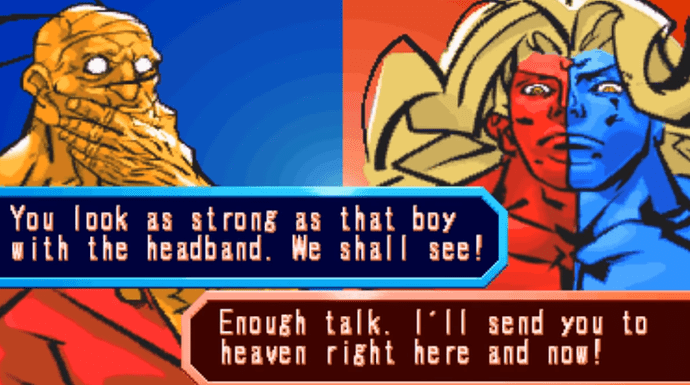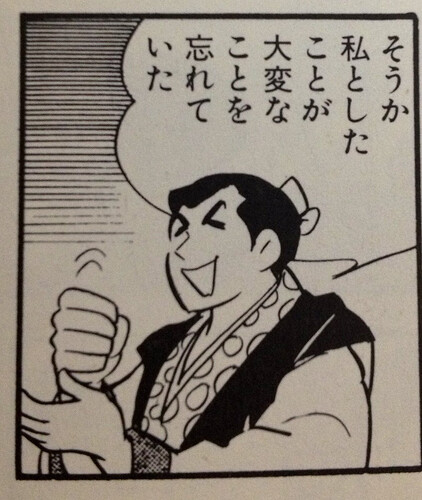I’ve listed here the various transliterations problems with Chinese characters in SF. A great part of the problem is due to SF being seen through a Japanese perspective: therefore, having the name of a Chinese (or otherwise Asian, Thailand being a prime example) character transliterated in Latin characters following the on’yomi (the Japanised Chinese pronunciation) far more often than the correct Chinese transliterated in Hanyu Pinyin for Mandarin or Yale romanisation for Cantonese, that I’ve arbitrarily chosen over its rivals only because Capcom used it for Dorai in his CFN profile. Yale romanisation uses Hs in conjunction with diacritics for some tones, so if someone finds that confusing here’s a comparison table.
元 Gen (“first”, “origin”) is a purely Japanised reading: the correct Chinese reading would be Yuán;
李 Lee (“plum”) is the common anglicised transcription of the Mandarin Lǐ. However, as Lee hails from HK it should be the Cantonese Léih. Incidentally, it’s the same character of Bruce Lee’s surname, 李小龍 Lǐ Xiǎolóng (Mandarin) or Léih Sìulùhng.
春麗 Chun Li (“spring beauty”) is the correct Mandarin Chūn Lì, only without the diacritics; they’re useless anyway if one doesn’t know Pinyin, not to mention that it would have been very complicated to write diacritics properly in the Nineties;
飛竜 Fei Long (“flying dragon”) is, like Chun Li, the Mandarin Fēi Lóng. Same problem with Lee: Fei is from Hong Kong, so he should be Fēi Lùhng. Incidentally, the Japanised reading of his name is hiryū… because he has the same characters in his name as Strider’s;
ユン Yun and ヤン Yang (Yan) are presented only in katakana, so we have to trust Capcom about the transliteration (from which we learn that the final N in Yang’s name is a NG and not a simple N). Amazingly, we instead know the characters for the names of
彗梅 Hoimei (“broom plum”) and 小梅 Shaomei (“little plum”). Here the problem is that the Western transliteration comes from the Japanese reading of the Mandarin version of their names (remember, still HK and yet no Cantonese…), Huìméi and Xiǎoméi respectively, while they should’ve been Waihmùih and Sìumùih.
丽芬 Li Fen (“beautiful fragrance”) is the correct Mandarin Lì Fēn, but it’s nonetheless interesting that Capcom chose to use the modern simplified Chinese characters for her name instead of the older ones, as they did for every other character. Her name in non-simplified Chinese would be 麗芬 Lì Fēn, being 麗 Lì (the same in Chun Li’s name) the older version of the modern 丽 Lì.
銅昴 Dorai (“copper pleiades”) doesn’t make sense: the correct Mandarin would be Tóng Mǎo, and Tùhng Máauh in Cantonese. The latter being the correct one, since Capcom even bothered to note so in his English CFN profile. 銅 as Do isn’t weird, but 昴 as rai is simply farfetched. I supposed in one of my previous ramblings that they just took the Cantonese reading of Chun Li’s last character, 麗 laih, that becomes rai in Japanese katakana and was initially thought as Dorai’s second character for his name… Forgetting that they changed the last character into 昴 máauh and just keeping the previous pronunciation. It’s the only logical explanation I could come up with.
ジウユー Xiayu and ヤンユー Jianyu come just out from thin air. Why on Earth should ヤンユー Yan’yū be transcribed “Jianyu”? Why the completely arbitrary X in ジウユー Jiuyū? Whoever first transliterated the Japanese in Latin characters did a pretty bad job, honestly. The original Japanese was sufficiently close to the correct Chinese 九月 Jiǔyuè “September” and 陽月 Yángyuè “October”.
ドクター呉 Doctor Woo is notorious for his name’s first misunderstanding during SF3, when 呉 was transliterated Kure instead of the correct Chinese 吳 Wú (even the character itself is slightly different between its Japanese and Chinese version).
@TazyryLipo, you said it was confusing. Well, it’s far worse than that: it’s a complete and irredeemable mess… 

